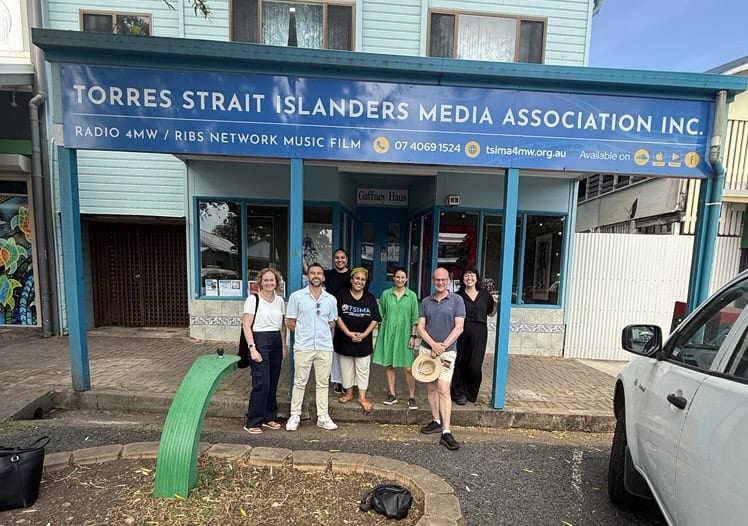The MCF 2025 design guidelines introduce three major changes to distributed antenna systems (DAS) in Australia: formal recognition of DAS infrastructure operators, expanded 5G frequency support including the 3500MHz band, and clear solution categories for different building types.
These updates enable more efficient shared infrastructure and faster 5G deployment across commercial buildings, hospitals, transport hubs, and venues.
What is MCF 2025?
The updated design guidelines for distributed antenna systems in Australia, released by the Mobile Carriers Forum.
Who needs MCF 2025 compliant DAS?
Building owners, property managers, and venue operators planning in-building mobile coverage solutions.
What’s new in MCF 2025?
Recognition of DAS infrastructure operators as a formal role, mandatory 3500MHz band support for 5G, and clear solution categories based on building type.
What is a DAS infrastructure operator?
An independent provider that designs, builds, owns, and operates DAS infrastructure on behalf of building owners, serving multiple mobile network operators simultaneously
The release of the Mobile Carriers Forum (MCF) 2025 specification for distributed antenna systems (DAS) represents a pivotal moment for Australia’s telecommunications infrastructure, moving beyond the 3G and 4G foundations of MCF 2018, to embrace the full potential of 5G technology and shared infrastructure solutions.
As Australia’s connectivity demands continue to evolve, the MCF 2025 guidelines introduce significant changes that will reshape how we deploy and manage in-building mobile coverage. At BAI Communications (BAI), we’re not just witnessing this transformation – we’re actively driving it forward through our role as Australia’s leading shared infrastructure provider, our landmark connection agreement partnership with Telstra, and our direct contribution to shaping these new guidelines through our invited submission to the MCF 2025 consultation process.
What does MCF 2025 mean for DAS infrastructure?
The MCF 2025 guidelines bring several game-changing updates that address the realities of modern connectivity demands. Most significantly, the guidelines now formally recognise the DAS infrastructure operator – a role that we have pioneered in the Australian market. This definition validates what we’ve long advocated for: that independent shared infrastructure providers can deliver superior outcomes for building owners, mobile network operators, and end users alike.
BAI was invited to provide input during the MCF 2025 consultation process, and we welcomed the opportunity to share our expertise and recommendations for enhancing the draft guidelines. Our submission emphasised the critical importance of defining and recognising the role that third-party shared infrastructure providers can play in deployment and maintenance of DAS infrastructure.
Under this new framework, a DAS infrastructure operator like BAI can design, build, own, and operate DAS infrastructure on behalf of building owners, providing turnkey solutions that serve multiple mobile network operators simultaneously. This approach enhances efficiency, delivers robust connectivity regardless of which carrier customers use, and provides greater partner choice alongside improved accountability and transparency in DAS management.
What are the technical changes in MCF 2025?
The MCF 2025 specification introduces several technical advances that position Australia at the forefront of 5G infrastructure:
New digital DAS architecture
The specification now includes a digital DAS architecture type alongside the traditional passive, hybrid, and active solutions. This digital approach represents a potential game-changer, offering direct connection to DAS infrastructure without expensive, power-hungry radio frequency (RF) signal sources. However, implementing digital solutions requires validation with all three major Australian carriers and network equipment vendors which is a complex process that shared infrastructure partners like us are uniquely positioned to navigate.
Expanded frequency support
The specification mandates support for the new 3500MHz band (band n78) across all DAS solutions, reflecting 5G’s spectrum requirements. Additionally, the 850MHz band specifications have been revised, ensuring comprehensive coverage across all frequency bands that Australian carriers utilise.
Smart solution categories
Perhaps most importantly for building owners, MCF 2025 introduces clear solution categories based on building type and capacity requirements:
- Standard solutions: Designed for hotels, hospitals, commercial offices, residential apartments, serviced apartments, small shopping centres, and carparks. These solutions offer flexibility with either single input, single output (SISO) DAS supporting all bands or 2×2 multiple input, multiple output (MIMO) solutions with three bands.
- Custom solutions: Tailored for high-capacity venues like large shopping centres, convention centres, stadiums, airports, public transport systems, and motorway tunnels. These solutions require 2×2 MIMO architecture supporting all frequency bands.
The BAI advantage: bringing the MCF 2025 vision to life
We are uniquely positioned to maximise the benefits of these specification changes. As Australia’s only recognised DAS infrastructure operator listed on the Australian Mobile Telecommunications Association (AMTA) website, we bring several distinct advantages:
Partnership with Telstra
Our recent landmark connection agreement with Telstra – Australia’s largest mobile network operator – demonstrates the practical value of the shared infrastructure model.
Under this agreement, Telstra connects to BAI-owned DAS infrastructure, which BAI designs, builds, monitors, and maintains as the DAS infrastructure operator, taking on the role traditionally assigned to a lead carrier.
This partnership enables us to deliver comprehensive connectivity solutions that extend far beyond basic mobile coverage. In addition to public mobile services, BAI can deliver holistic connectivity solutions which may include public safety networks and operational systems such as two-way radio, private mobile networks, or IoT solutions.
Spectrum assets and integration capabilities
Having been successfully awarded licenced 3.8GHz spectrum in major metropolitan centres across the country for private 5G solutions, BAI is able to offer an integrated, cost-effective network deployment. This spectrum ownership, combined with our DAS infrastructure operator capabilities, allows us to provide truly integrated solutions that traditional approaches cannot match.
Global experience and local expertise
BAI’s model builds upon the shared infrastructure solutions successfully deployed in 300+ venues across the Northern Hemisphere by its sister company, Boldyn Networks. This extensive international experience, combined with our deep understanding of Australian market requirements, positions us to deliver world-class outcomes locally.
How do network operators, building owners and customers benefit?
The combination of MCF 2025’s enhanced framework and BAI’s DAS infrastructure operator model delivers compelling benefits:
For building owners:
- Single point of contact: Work with one trusted partner instead of managing relationships with multiple carriers.
- Enhanced tenant value and reliable voice connectivity through actively managed and monitored DAS.
- Flexible commercial terms: Deployments with more predictable budgeting options that transforms large variable investments into fixed recurring service fees.
- Comprehensive solutions: Beyond public mobile coverage, access to private 5G, public safety networks and operational systems such as two-way radio, P25 and other communication systems.
- Reduced complexity: Streamlined design approval and system handover processes.
For end users:
- Extended reach: BAI and MNOs partnerships deliver reliable indoor mobile connectivity to more locations than ever before.
- Enhanced capacity: Optimised network performance in high-density environments.
- Consistent coverage: Users stay connected for payment processing, mobile banking, essential calls, and loyalty app interactions.
For mobile network operators:
- Faster time-to-market: Accelerated rollout and quicker service launch capabilities through a single DAS operator partner.
- Providing an enhanced and reliable mobile service and quality of experience within large venues and buildings.
- Simplified operations: Eliminated operational complexity of managing individual deployments.
Looking forward: the shared infrastructure advantage
As Elyssa Rollinson, Chief Commercial Officer at BAI Communications, noted: “We look forward to working in partnership with Telstra, other MNOs, and the leading property and venue owners in Australia, to provide adaptive connectivity experiences in public spaces. We also look forward to being a trusted ‘partner of choice’ in the market with a solution which meets the needs of all operators.”
The MCF 2025 guidelines recognition of DAS infrastructure operators validates what international markets have long understood: shared infrastructure managed by independent operators is more efficient, cost-effective, and forward-looking than traditional approaches. Countries like the UK have established comprehensive frameworks like the Joint Operators Technical Specification (JOTS) that recognise shared infrastructure contractors’ vital role in delivering turnkey solutions.
Key recommendations for stakeholders
Based on our analysis of MCF 2025 and our industry experience, BAI recommends:
For building owners:
- Engage early with recognised DAS infrastructure operators to understand your building’s solution category requirements.
- Consider the long-term benefits of DAS infrastructure operators approaches beyond initial cost considerations.
- Plan for 5G requirements from the outset, including support for the mandatory 3500MHz band.
For mobile network operators:
- Leverage partnerships with DAS infrastructure operators to accelerate 5G coverage deployment.
- Unlock operational efficiencies through experienced, specialist-managed infrastructure.
The path forward
The MCF 2025 specification represents more than a technical update – it’s a recognition that Australia’s connectivity future lies in collaborative, shared infrastructure approaches. We stand ready to partner with building owners, mobile network operators, and technology providers to realise this vision.
Our combination of technical expertise, financial capability, operational excellence, and strategic partnerships, exemplified by our agreement with Telstra, positions us as the ideal partner for organisations seeking to future-proof their connectivity infrastructure.
As we move forward with the MCF 2025 implementation, BAI remains committed to working closely with AMTA and all industry stakeholders to ensure the guidelines provide a robust framework for Australia’s DAS infrastructure future. Together, we’re not just building networks – we’re creating the foundation for Australia’s connected tomorrow.
To learn more about how BAI Communications can help your organisation leverage the opportunities created by MCF 2025, or to discuss your specific connectivity requirements, contact our team of specialists today.






